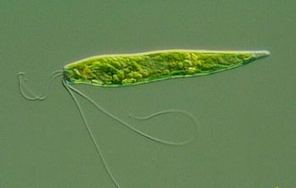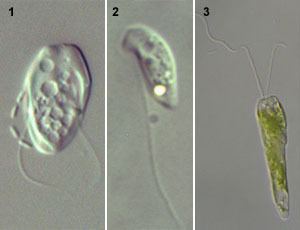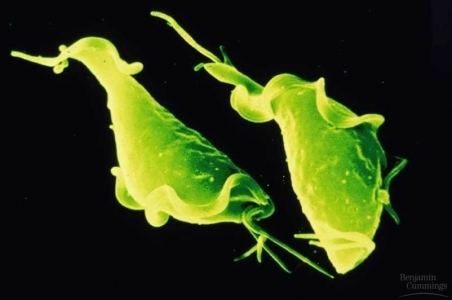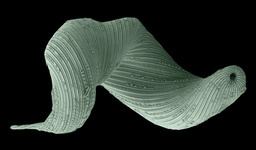Domain Eukaryota Rank Kingdom | Scientific name Excavata Higher classification Eukaryote | |
Lower classifications Euglenozoa, Parabasalid, Kinetoplastida, Metamonad, Heterolobosea | ||
Supergroup excavata
Excavata is a major supergroup of unicellular organisms belonging to the domain Eukaryota. Introduced by Thomas Cavalier-Smith in 2002 as a new phylogenetic category, it contains a variety of free-living and symbiotic forms, and also includes some important parasites of humans. Excavates were formerly considered to be included in the now obsolete Protista kingdom. They are classified based on their flagellar structures, and they are considered to be the oldest members (basal lineage) of flagellated organisms.
Contents
- Supergroup excavata
- Protists excavata i
- Characteristics
- Classification
- Discoba or JEH clade
- Metamonads
- Monophyly
- Malawimonas
- Cladogram
- References

The Discobaean excavata (Euglenozoa, Percolozoa, Tsukubea, Jakobea) now appear to be basal Eukaryotes, while the Metamonadaean and Malawimonaen excavata now appear to be sister clades of the Podiata. The Discoba may be highly paraphyletic.

Protists excavata i
Characteristics

Many excavates lack 'classical' mitochondria—these organisms are often referred to as 'amitochondriate', although most retain a mitochondrial organelle in greatly modified form (e.g. a hydrogenosome or mitosome). Among those with mitochondria, the mitochondrial cristae may be tubular, discoidal, or in some cases, laminar. Most excavates have two, four, or more flagella and many have a conspicuous ventral feeding groove with a characteristic ultrastructure, supported by microtubules. However, various groups that lack these traits may be considered excavates based on genetic evidence (primarily phylogenetic trees of molecular sequences).

The closest that the excavates come to multicellularity are the Acrasidae slime molds. Like other cellular slime molds, they live most of their life as single cells, but will sometimes assemble into a larger cluster.
Classification
Excavates are classified into six major subdivisions at the phylum/class level. These are shown in the table below. An additional organism, Malawimonas, may also be included amongst excavates, though phylogenetic evidence is equivocal.
Discoba or JEH clade
Euglenozoa and Heterolobosea (Percolozoa) appear to be particularly close relatives, and are united by the presence of discoid cristae within the mitochondria (Superphylum Discicristata). More recently a close relationship has been shown between Discicristata and Jakobida, the latter having tubular cristae like most other protists, and hence were united under the taxon name Discoba which was proposed for this apparently monophyletic group.
Metamonads
Metamonads are unusual in having lost classical mitochondria—instead they have hydrogenosomes, mitosomes or uncharacterised organelles. The oxymonad Monocercomonoides is reported to have completely lost homologous organelles.
Monophyly
Excavate relationships are still uncertain; it is possible that they are not a monophyletic group. The monophyly of the excavates is far from clear, although it seems like there are several clades within the excavates which are monophyletic.
Certain excavates are often considered among the most primitive eukaryotes, based partly on their placement in many evolutionary trees. This could encourage proposals that excavates are a paraphyletic grade that includes the ancestors of other living eukaryotes. However, the placement of certain excavates as 'early branches' may be an analysis artifact caused by long branch attraction, as has been seen with some other groups, for example, microsporidia.
Malawimonas
In addition to the groups mentioned in the table above, the genus Malawimonas is generally considered to be a member of Excavata owing to its typical excavate morphology, and phylogenetic affinity to excavate groups in some molecular phylogenies. However, its position among excavates remains elusive.
Cladogram
A proposed cladogram for the positioning of the Excavata is, with the Eukaryote root in the excavates and the Eukaryotes as sister of the Heimdallarchaeota,
In this view, excavata is highly paraphyletic, and is proposed to be abandoned. In alternative view, the Discoba are sister to the rest of the Diphoda.
